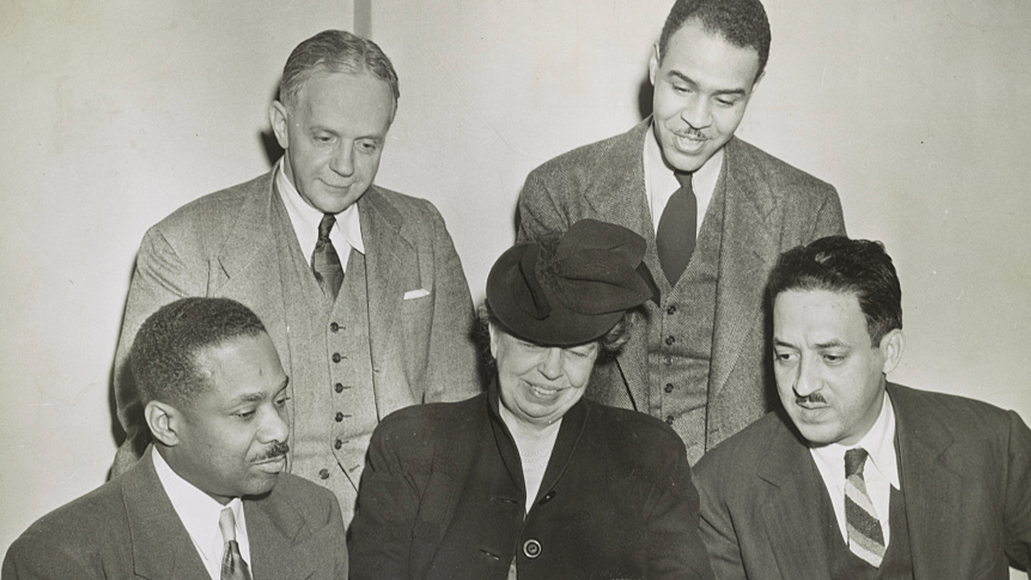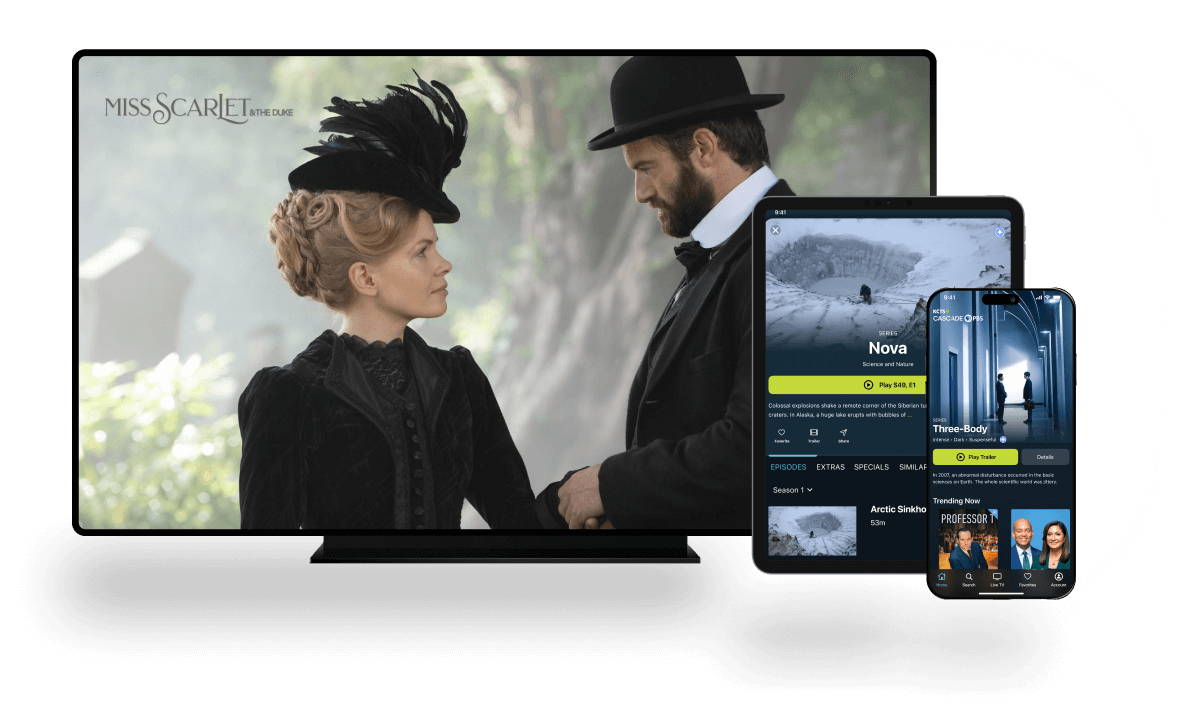
American Experience
Harriet Beecher Stowe Visits a Slave State
Show title: American Experience
Video title: Harriet Beecher Stowe Visits a Slave State
Video duration: 2m 21sVideo description: Having recently moved to Cincinnati with her family, Harriet Beecher visited the slave state of Kentucky in 1833, staying here at the Marshall Key House. While in Kentucky, she witnessed slavery up close for the first time. The house now operates as the Harriet Beecher Stowe, Slavery to Freedom Museum.
Watch Clip

Charles Davenport
1m 25s
A proponent of Eugenics crusade, Charles Davenport believed that selective breeding could transform the human race. He founded the Eugenics Record Office in 1910 and recommended widespread eugenics education, including immigration laws to keep out the "defectives" and forced sterilization of native born and immigrants.
Watch Clip

Mable Stark: The Trainer
1m 23s
Trained as a nurse, Mable Stark's very first trip to the Circus transformed her life. She marries one of the foremost big cat trainer of the time and becomes one of the 20th century's most famous cat trainers.
Watch Clip

Adam Forepaugh: The Competitor
1m
Adam Forepaugh started his circus business during the Civil War. But when Barnum entered the circus business, Forepaugh became Barnum's biggest competitor and their rivalry launched the American circus into its golden age.
Watch Clip

P.T. Barnum: The Showman
1m 23s
Barnum's father died when he was 15 and he was determined to rise up from his poor living. He first bought a museum and made it into a live performance with animals. He would then partner with James Bailey and together they would create the circus that became known as the Barnum & Bailey Circus.
Watch Clip

The Circus: Episode 1 Trailer
30s
Explore the early days of this popular, influential and distinctly American form of entertainment during an era when master showmen P.T. Barnum, James Bailey and the Ringling Brothers transformed the nation’s popular culture.
Watch Preview

The Circus: Trailer
30s
The Circus explores the colorful history of this popular, influential and distinctly American form of entertainment, from the first one-ring show at the end of the 18th century to 1956, when the Ringling Bros. and Barnum & Bailey big top was pulled down for the last time.
Watch Preview

The Circus | Coming October 2018
1m
The Circus explores the colorful history of this popular, influential and distinctly American form of entertainment, from the first one-ring show at the end of the 18th century to 1956, when the Ringling Bros. and Barnum & Bailey big top was pulled down for the last time.
Watch Clip

The Acrobat
8m 32s
/ TV-PG
“The Acrobat,” explores the contemporary social circus movement through the eyes of Sidney “Iking” Bateman. Growing up in St. Louis, Sidney “Iking” Bateman was exposed to gang life at an early age. This is the story of how he found a community of amateur acrobats, chose circus life over gang life and became a performing artist now touring the world with Cirque du Soleil.
Watch Clip

Eugene O'Neill: Playwright and Nobel laureate
2m 21s
Eugene O’Neill revolutionized the American stage during the 1920’s and 30’s, with ground breaking plays as The Emperor Jones, Anna Christie and Mourning Becomes Electra. He was honored with three Pulitzer prizes and the Nobel prize in literature.
Watch Clip

The Luckiest Man
2m 31s
They called him “the iron horse.” Seemingly impervious to injury or illness, Yankee slugger Lou Gehrig never missed a game. But in the spring of 1939, his play began to deteriorate. Not wanting to burden the team, Gehrig benched himself; the next month, he was diagnosed with Amyotrophic Lateral Sclerosis (ALS). On July 4th, he gave a farewell speech to a sold-out crowd at Yankee Stadiu
Watch Clip

Letter From A Father
2m 6s
When Ronald Reagan learned he had Alzheimer's disease, he wrote a letter for history. He addressed it to the American people. At summer's end in 2001, George H.W. Bush also wrote a letter for history. He addressed it to his children.
Watch Clip

Hoops and Laughter: The Harlem Globetrotters
3m 33s
/ TV-PG
Nearly two decades before the NBA, a team of African American basketball players from Chicago began touring the Midwest as the Harlem Globetrotters.
Watch Preview

RFK: Trailer
20s
After an assassin's bullet took his brother's life, Robert F. Kennedy was bereft, not only of someone he loved, but of a role that had given meaning to his life. He had devoted himself to his brother John, suppressing his own ambitions for the sake of the Kennedy name. JFK's death plunged him into unremitting pain and grief, and left him struggling to find his own voice.
Watch Clip

RFK Announces King's Death
2m 32s
On June 5, 1968, Presidential candidate Robert F. Kennedy was fatally shot in Los Angeles. Just two months earlier, he delivered the news of Dr. King’s assassination to a crowd in Indianapolis.
Watch Clip

The Chinese Exclusion Act: Chapter 1
9m 16s
Examine the origin, history and impact of the 1882 law that made it illegal for Chinese workers to come to America and for Chinese nationals already here ever to become U.S. citizens.
Watch Clip

An Extraordinary Law
35s
On May 6, 1882, the Chinese Exclusion Act was signed into law by President Chester A. Arthur.
Watch Preview

The Chinese Exclusion Act: Promo
30s
/ TV-G
Examine the origin, history and impact of the 1882 law that made it illegal for Chinese workers to come to America and for Chinese nationals already here ever to become U.S. citizens.
Watch Clip

United States v. Wong Kim Ark
2m 39s
On March 28, 1898, the Supreme Court ruled that Wong Kim Ark had acquired U.S. citizenship at birth and that "the American citizenship which Wong Kim Ark acquired by birth within the United States has not been lost or taken away by anything happening since his birth."
Watch Preview

The Chinese Exclusion Act: Preview
3m 18s
Examine the origin, history and impact of the 1882 law that made it illegal for Chinese workers to come to America and for Chinese nationals already here ever to become U.S. citizens.
Pagination
Supported by










